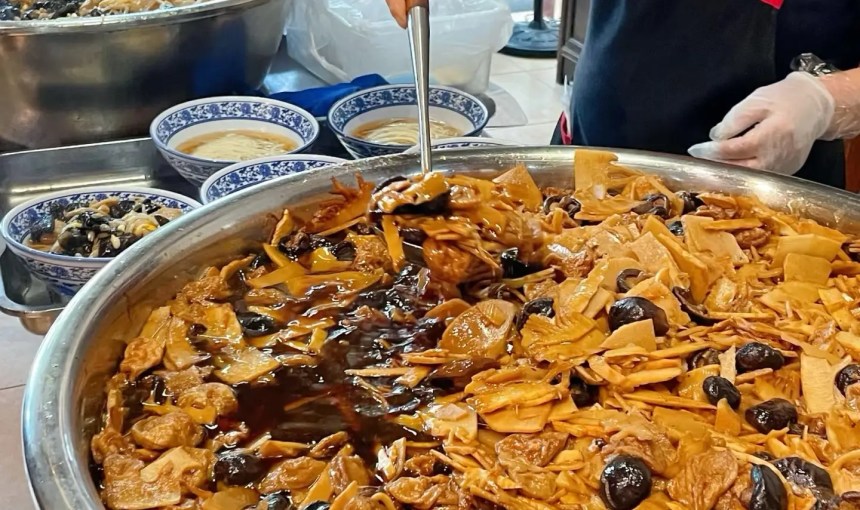
What Can Vegetarians Eat in Suzhou?
Share
“This pot of soup has been simmering since the Republic era,” the master cook said as he stirred the large iron cauldron. “We add fresh water every day, but the old broth has never been broken.” The aroma of mushrooms mingled with the scent of firewood, evoking memories of the vegetarian broths cooked in Singaporean temples. It turns out that the most authentic flavors of Suzhou are hidden right in the temple kitchens.
1. “Luohan Noodles” at Xiyuan Temple
In 1930, when Master Xuyun stayed here, he created this noodle dish using eighteen kinds of vegetables, symbolizing the Eighteen Arhats. Even today, the master chef still follows the rule of “bamboo shoots in spring, mushrooms in winter; eggplant in summer, lotus root in autumn.” Last month, I happened to see a little monk sneaking a bite of gluten and getting caught, yet the chef laughed: “Even the Buddha loves this crispy treat.”
How to eat: First, sip the original broth three times; then mix in the sesame paste; finally, press the fried gluten into the soup—it will make a “gudu” bubbling sound, which old Suzhou residents call “Mianjin Tanqi” (Gluten Sigh).
2. “Repentance Bun” at Lingyan Mountain
Legend has it that during the Ming Dynasty, a wealthy merchant created this bun to atone for his sins, filling it with shepherd’s purse and tofu and distributing it to pilgrims. Today, every morning, you can see elderly locals lining up with bamboo baskets. They say: “Taking a bite of this vegetarian bun is like tasting the morning bell of the mountain temple in your mouth.”
3. “Vegetarian Three Whites” at Wangshi Garden
Legend: During the Qianlong era, the garden owner wanted to please his vegetarian mother, so the chef recreated the “Three Whites of Taihu” (white fish, white shrimp, silverfish) entirely with vegetarian ingredients. The modern version is even more exquisite—water bamboo carved into fish shapes, yam sliced as thin as cicada wings, and king oyster mushrooms shredded to mimic the texture of shrimp.
Scene: This dish is best enjoyed during an evening visit to Wangshi Garden. When the opera The Peony Pavilion reaches the line “How can one resist a beautiful time and scenery,” a maid carries the dish across the Nine-Turn Bridge, and under the candlelight, the vegetarian delicacies look like jade carvings.
4. Pan Yulin’s Sweet Congee: A Century-Old Love Letter
Backstory: During the Republic era, the young master of the Pan family wrote love letters every day at his family’s congee shop to woo a female student. Later, when her family fell on hard times, he secretly hid silver coins in the sweet congee. Today, the seventh-generation descendant still recites the family adage while cooking: “It must be sweet but not cloying, just like love—never too overwhelming.”
“In Suzhou dialect, it’s called ‘Su Du Xian.’ ‘Du’ means slow simmer over low heat, and ‘Xian’ refers to the natural flavor of the ingredients—doesn’t that perfectly reflect the character of Suzhou people?”
Indeed, vegetarian cuisine here is never flashy, yet it simmers a millennium of culture into every pot. It’s like the pierced windows in Lingering Garden—seemingly simple, yet they allow a beam of light to trace the path of a landscape painting.
One morning, while drinking tea at Yipu Garden, I saw an old gardener trimming the wisteria. He smiled and said, “You vegetarians understand best—a good vegetarian dish is like this garden: it needs space, it needs to breathe.”


